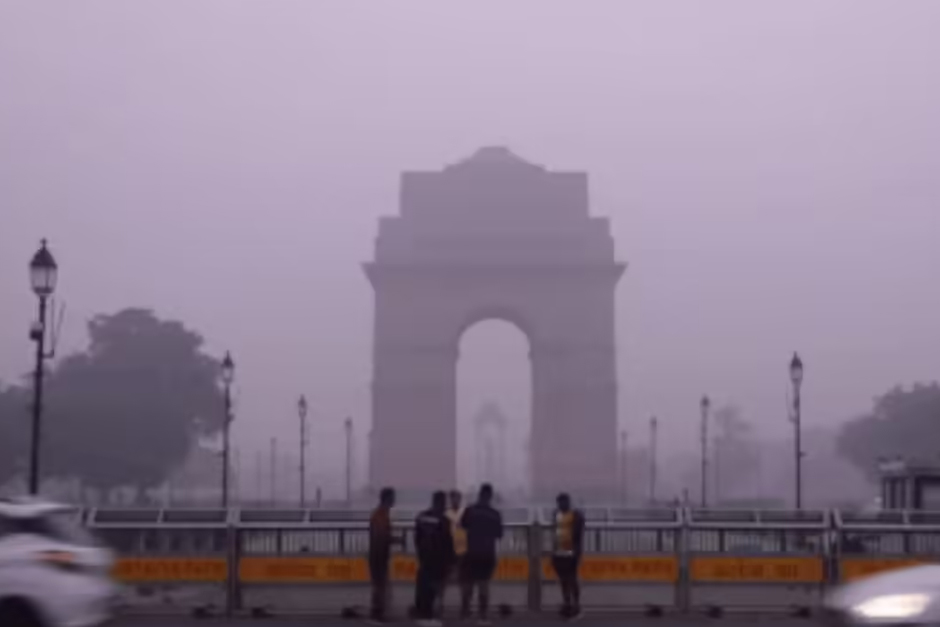As winter approaches, a familiar, unwelcome blanket descends upon India’s capital region. Delhi, already grappling with seasonal pollution, has once again plunged into an alarming state, with parts of the National Capital Region (NCR) registering Air Quality Index (AQI) levels firmly in the ‘severe’ category. This recurring phenomenon transforms the vibrant cityscape into a canvas of grey, signalling a profound public health crisis and raising urgent questions about sustainable urban living.
The transition from clear skies to a dense, choking haze has become an annual ritual, impacting millions. From Gurugram to Ghaziabad, Noida to Faridabad, residents are waking up to diminished visibility, acrid air, and the palpable discomfort that comes with breathing heavily contaminated air. This desolation of smog isn’t merely an aesthetic blight; it’s a silent assailant on the health and well-being of the populace, demanding immediate and concerted action.
A Choking Reality: Delhi’s Air Quality Plummets
The term ‘severe’ AQI is far from a mere descriptor; it represents a critical health emergency. When the AQI crosses the 400 mark, as it frequently does in Delhi during this period, it means that the air is so polluted that it can significantly affect even healthy individuals and seriously impact those with pre-existing respiratory or cardiovascular conditions. This often translates to high concentrations of PM2.5 and PM10 particulate matter, alongside other harmful gases.
Recent data from various monitoring stations across Delhi and its surrounding areas paint a stark picture. Localities like Anand Vihar, Mundka, Wazirpur, and Ashok Vihar have consistently reported AQI values soaring well above the 400-mark, often touching 450 or even 500 in some pockets. These numbers are a grim reminder of the health risks involved, including heightened risk of respiratory illnesses, heart disease, and reduced life expectancy. Visibility takes a dramatic hit, disrupting daily life and casting a pall over outdoor activities.
Behind the Haze: Tracing the Sources
The factors contributing to Delhi’s severe air pollution are complex and multifaceted, forming a toxic cocktail that intensifies with specific meteorological conditions. A significant contributor remains stubble burning in neighbouring agricultural states of Punjab and Haryana. Farmers, often constrained by time and resources, resort to burning crop residue after harvest, sending plumes of smoke drifting towards the capital.
Beyond agricultural fires, local emission sources play a critical role. Vehicular pollution, driven by an ever-increasing number of cars and commercial vehicles, is a persistent problem. Industrial emissions, construction dust from rapid urban development, and open waste burning further exacerbate the situation. Coupled with cooler temperatures and calm winds characteristic of the winter months, these pollutants become trapped closer to the ground, unable to disperse, leading to the dense smog that blankets the region.
“Delhi’s air quality crisis is a stark reminder that environmental health is intrinsically linked to public health and economic stability,” states Dr. Rhea Sharma, an environmental policy researcher based in Delhi. “While seasonal factors amplify the problem, the core issues lie in unchecked emissions from multiple sectors. A sustained, multi-pronged approach involving strict enforcement, technological solutions, and behavioural change is crucial to break this cycle.”
Consequences and Calls to Action
The human cost of this pollution is immense. Hospitals report a surge in patients suffering from respiratory ailments, including asthma attacks, bronchitis, and acute respiratory infections. Children and the elderly are particularly vulnerable, experiencing exacerbated symptoms and long-term health complications. Beyond health, the pollution also impacts tourism, local businesses, and overall productivity, casting a shadow over the city’s aspirations.
In response to the deteriorating air quality, authorities often implement measures under the Graded Response Action Plan (GRAP), including bans on construction activities, restrictions on polluting vehicles, and the promotion of public transport. However, the recurring nature of the crisis underscores the need for more permanent and effective solutions. This includes promoting cleaner fuels, investing in robust public transportation networks, encouraging sustainable agricultural practices to reduce stubble burning, and stringent monitoring of industrial emissions.
The desolation of smog in Delhi is a collective challenge that demands a collective response. It requires coordinated efforts between central and state governments, active participation from industries, responsible choices from citizens, and consistent public awareness campaigns. Only through sustained commitment and collaborative action can Delhi hope to breathe freely again, transforming the grey haze into a vision of a healthier, more sustainable future.




